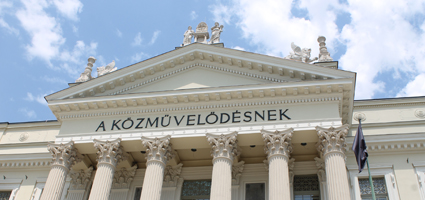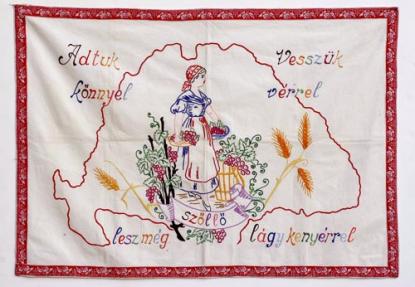2025. August 2. Saturday
Ferenc Móra Museum - Museum of Csongrád County Government - Szeged
 |
Address: 6720, Szeged Roosevelt tér 1-3.
Phone number: (62) 549-040
E-mail: info@mfm.u-szeged.hu
Opening hours: Mon-Sun 10-18
|
The exhibition has closed for visitors.
2005.06.24. - 2005.08.31.
Museum tickets, service costs:
|
Ticket for adults
|
1590 HUF
|
|
|
Ticket for adults
(lookout tower)
|
700 HUF
|
|
|
Ticket for students
|
990 HUF
|
|
|
Ticket for students
(lookout tower)
|
500 HUF
|
|
|
Ticket for pensioners
(lookout tower)
|
500 HUF
|
|
|
Individual ticket for pensioners
|
990 HUF
|
|
|
Ticket for families
(max. 2 adults + 2 children)
|
4490 HUF
|
/ family
|
|
Ticket for families
(lookout tower, max. 2 adults + 2 children)
|
2000 HUF
|
/ family
|
|
Combined ticket for adults
(all exhibition places in Szeged)
|
2490 HUF
|
|
|
Combined ticket for students
(all exhibition places in Szeged)
|
1490 HUF
|
|
|
Combined ticket for pensioners
(all exhibition places in Szeged)
|
1490 HUF
|
|
|
Combined ticket for families
(all exhibition places in Szeged, max. 2 adults + 2 children)
|
6990 HUF
|
/ family
|
|
Guide
|
7500 HUF
|
/ place
|
|
Guide
|
10000 HUF
|
/ place
|
The wall covers embroidered with red and white thread were fashionable from the second half of the 19th century. First, they spread along the civic population via the German inhabitants, later the homes of the laborers and peasants were ornamented with them as well.

Its first function was to cover the critical parts of the kitchen wall, later they rather served as ornaments. It was due to the songs, texts, sometimes idyllic, and romantic pictures on it.
The prepressed samples that ousted the authentic works heralded teachings, talked about the clean industrious housewife and the faithful husband. They talked about feeling, love, homesickness, general truth etc. The texts were sometimes translated from German, but some of them were Hungarian songs, chansons and hits of the time. Extracts of the Bible also became inscriptions on the wall covers but the origin of some is sometimes difficult to find.
The wall covers that are often kiths-like, though not always, are now displayed in our museum. The researchers saved this interesting type of kitchen textiles when they admitted that the covers faithfully mirror the wish of the people to escape from their bounds. The wall covers were proofs of the wish to live a better, more civic life.
The ethnographic collection of the Ferenc Móra Museum does not have an uncountable number of wall covers. One that is worth of mentioning is the piece found in a downtown peasant home recently. Its uniqueness lays in its rare representation. The Trianon symbol irredentist cult appeared in several forms in WWI and WWII. They appeared in the press, public works and sometimes on the objects of the peasantry. This wall cover shows the bitter feeling after the war via well-known rhythms. According to its owner, this piece was made in the 40's and covered the wall of the house in downtown until it was moved to the museum in 2002.

Its first function was to cover the critical parts of the kitchen wall, later they rather served as ornaments. It was due to the songs, texts, sometimes idyllic, and romantic pictures on it.
The prepressed samples that ousted the authentic works heralded teachings, talked about the clean industrious housewife and the faithful husband. They talked about feeling, love, homesickness, general truth etc. The texts were sometimes translated from German, but some of them were Hungarian songs, chansons and hits of the time. Extracts of the Bible also became inscriptions on the wall covers but the origin of some is sometimes difficult to find.
The wall covers that are often kiths-like, though not always, are now displayed in our museum. The researchers saved this interesting type of kitchen textiles when they admitted that the covers faithfully mirror the wish of the people to escape from their bounds. The wall covers were proofs of the wish to live a better, more civic life.
The ethnographic collection of the Ferenc Móra Museum does not have an uncountable number of wall covers. One that is worth of mentioning is the piece found in a downtown peasant home recently. Its uniqueness lays in its rare representation. The Trianon symbol irredentist cult appeared in several forms in WWI and WWII. They appeared in the press, public works and sometimes on the objects of the peasantry. This wall cover shows the bitter feeling after the war via well-known rhythms. According to its owner, this piece was made in the 40's and covered the wall of the house in downtown until it was moved to the museum in 2002.
